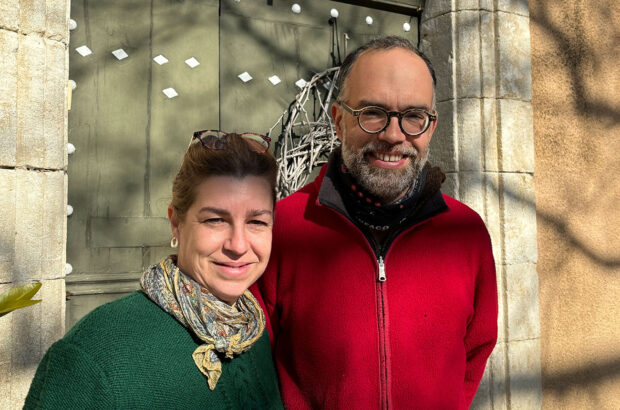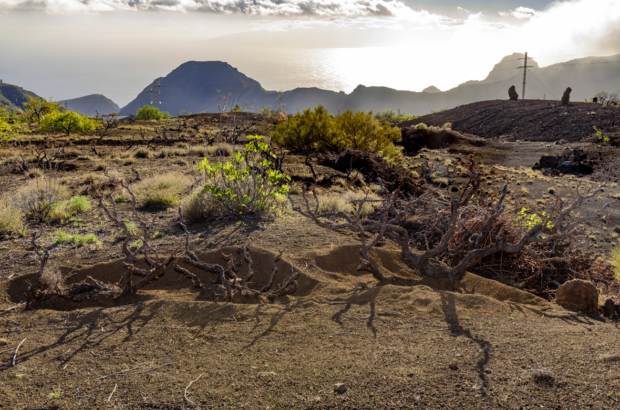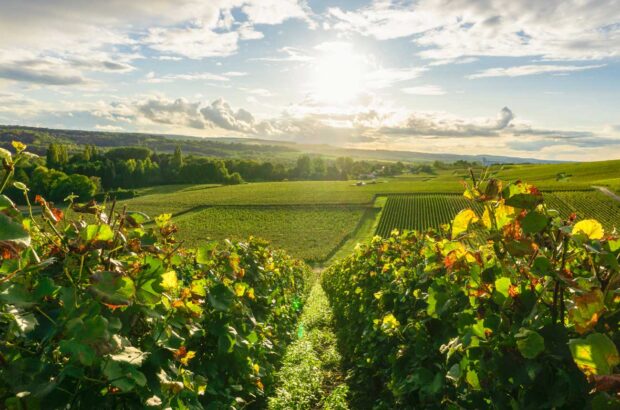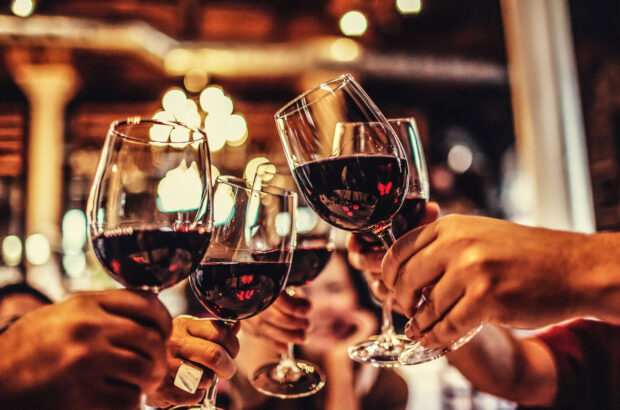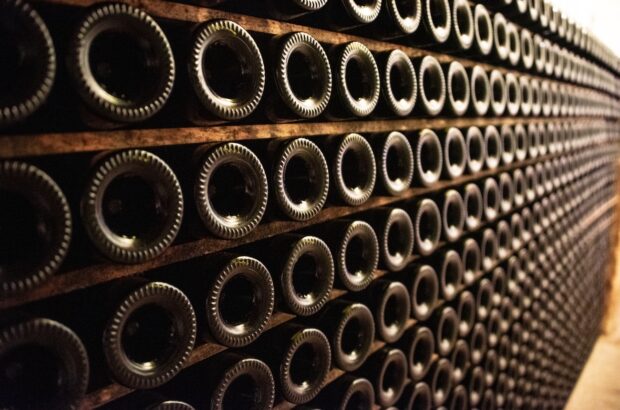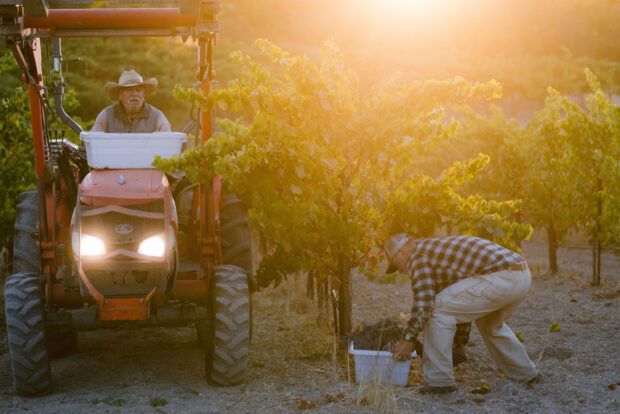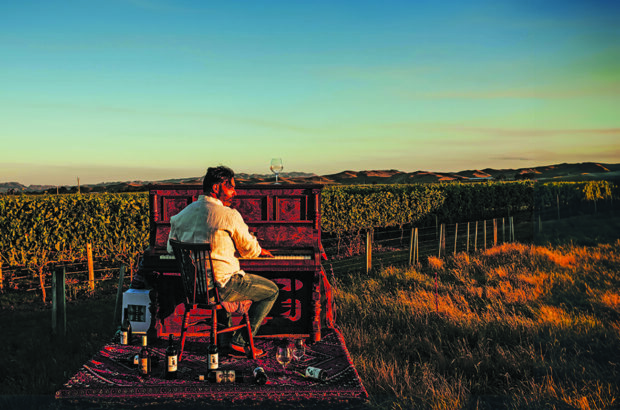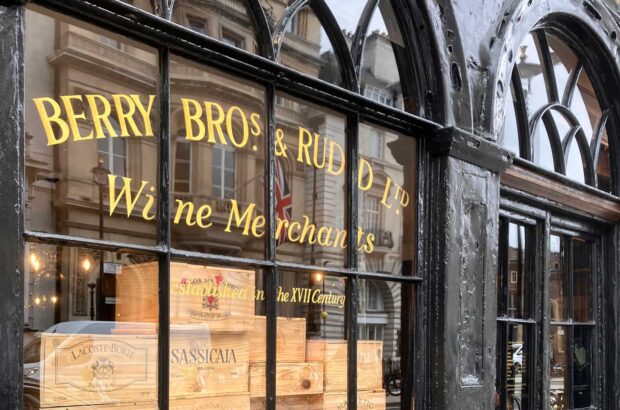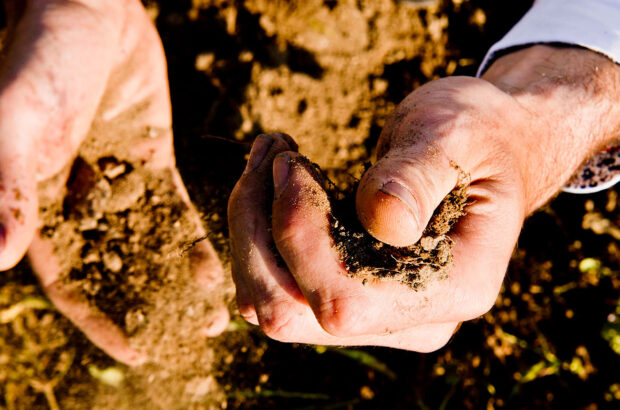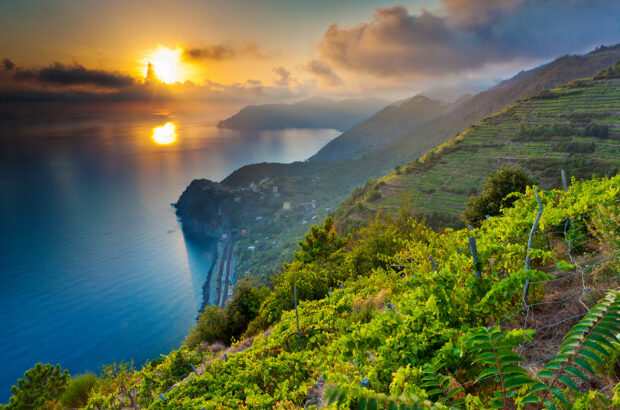Right in the centre of the country, just southeast of Tuscany and north of Rome, Umbria epitomises the best of Italy, its green hills a patchwork of olive trees, vines, fields and woodlands peppered with picturesque stone villages and an alluring array of cities of art. The wine scene is exciting, varied and fast-evolving, and biodiversity is deep-rooted: many wineries also produce olive oil and other crops. The region’s top wines continue to be from the centre and west, although other areas are emerging thanks to producers such as Leonardo Bussoletti, who is promoting wines from the Ciliegiolo variety around Narni, in southern Umbria.
In the west, Orvieto has been a centre of winemaking excellence since ancient Etruscan times (8th to 1st centuries BCE), later consolidated by Renaissance popes. Today’s producers are demonstrating the impressive longevity of Orvieto’s white blends, many of which benefit from time in naturally cool Etruscan caves, which act as ideal ageing cellars. And in central Umbria, Montefalco and Spoleto DOC areas overlap in a basin surrounded by hills. Here, Trebbiano Spoletino (thought not to be related to other grapes with the ‘Trebbiano’ name) is surging in popularity. In addition to extraordinary versatility for different styles, including spumante, such as the bitey brut nature made by historic winery Antonelli, the variety is naturally disease-resistant. Le Thadee makes a wine (named +128+) from its collection of 60-70 pre-phylloxera Trebbiano Spoletino vines (more than 100 years old), which are trained on field maples, climbing to heights of more than 3m; and they have propagated more. The winery’s attractive villa, built in the Italian ‘Liberty’ style of the early 20th century, will open for tastings from spring-summer 2024.

Credit: Maggie Nelson
Montefalco’s famously tannic Sagrantino is increasingly found in refreshingly elegant, contemporary styles, such as the fine and fruity DWWA 2023 Gold award winner Vignalunga Montefalco Sagrantino, made by Moretti Omero from vines above 400m. A flurry of winemaking experiments among local producers has resulted in multi- pronged advances for new-generation Sagrantino: Le Thadee’s velvety version, for example, begins its fermentation in amphorae.
Italy’s red mainstay Sangiovese is central to Montefalco Rosso and Torgiano Rosso Riserva DOCG, while at lake Trasimeno – in the north of the region near its capital, Perugia – Trasimeno Gamay (Grenache, in its historically misnamed local guise) is gaining ever more international attention, including recognition at the Grenaches du Monde awards.
While Umbria is delightful year-round, most wine-themed events run from spring to autumn: Trasimeno Rosé Festival (late April 2024), Cantine Aperte winery open days (25-26 May) and Enologica Montefalco (20-22 September). Among the wineries with accommodation, Roccafiore near Todi is centrally located and offers excellent wines, a restaurant and spa; the vineyard Wine Chalet is idyllic.
Orvieto

The farmhouse at the centre of the Madonna del Latte estate in the Orvieto countryside
A visit to Palazzone provides an all-encompassing experience of the essence of Orvieto, with views over the city on its rocky perch just 5km away. Book a vertical tasting of four vintages of Campo del Guardiano Orvieto Classico Superiore and experience the exceptional ageing capacity of Orvieto’s whites (€120 per person including tour and lunch). Alternatively, opt for lunch with the winemaker, tasting from the barrel, truffle hunting, or a simple winery tour and tasting. Wines include a brut nature traditional-method spumante with local variety Verdello, and Musco – an old-style field blend of Procanico, Verdello and Malvasia fermented in chestnut barrels in an Etruscan cave. Winemaker Pietro Dubini’s father Giovanni is president of Umbria’s Movimento Turismo del Vino association, and hospitality is first class. Rooms at the locanda, a restored medieval pilgrims’ hostel, feature a stylish combination of historical elements and contemporary design.
The decision by Leon Zwecker’s parents to buy a tumbledown farmhouse in the Orvieto countryside inspired him to embark on international winemaking studies after leaving high school in Germany and, for the past 15 years, he’s been running Madonna del Latte. The estate’s 5ha of vineyards and hundreds of olive trees grow on volcanic soil around the beautifully restored farmhouse where Zwecker lives with his Lithuanian wife and young family. The winery is built into the hill behind, and below is a country- chic tasting room and naturally cool Etruscan cave, which makes a perfect barrel room.
Here, he makes superb wines largely with international varieties such as Syrah, Cabernet Franc and Viognier, including an exquisite barrel-fermented version of the latter (a DWWA 2023 Silver award winner). As Zwecker points out: ‘We’re an international family – we make international wines.’ There are amazing views across to Orvieto from the terrace garden at the historic location of Cantine Neri, a medieval Templars’ residence. In 2006, Enrico Neri decided to start producing wine rather than just selling grapes, and he concentrates on traditional local varieties for his intense Orvieto Classico Superiore and other wines. Neri pioneered traditional-method Grechetto spumante, opting for the more aromatic variety known as Grechetto G5 (Grechetto Gentile) rather than the more structured, separate variety Grechetto G109 used in DOC Orvieto. Winery tours (from €28) take in the Etruscan caves, where wines are aged and old vintages stored, and options include blind or vertical tastings, blending experiences and pairings with estate-produced charcuterie.

The lounge at Locanda Palazzone, near Orvieto
Todi
Todi is home to the enticingly fragrant Grechetto Gentile, used for Iacopo Paolucci’s first wine, Iacopone, dedicated to Jacopone da Todi, the town’s celebrated medieval friar- poet. A clear-sighted winemaker and self-starter, Paolucci began in 2016 with a degree in winemaking and experience with a big-name producer under his belt. He works 6ha of vines from a tiny, garage-style winery complete with bottling line and picturesque pergola for tastings, with a single assistant and two or three ginger cats. Paolucci hosts a village party each July nearby at Doglio, where time seems to have stood still and older-generation villagers have provided invaluable testimonies about the traditional grapes that were grown here. Paolucci has helped resuscitate the spicy red Grero and he’s introduced Verdello here, too (as distinct from ‘Verdelho’), with the first harvest due this year. He also makes pét-nat and passito versions of Grechetto Gentile.
Montefalco

At Giampaolo Tabarrini, wines can be tasted with seaonal tapas
When Peter Heilbron started producing wine in 2008, his sole aim was to make Sagrantino with a new elegance, drawing fresh finesse from a grape known for its challenging tannins. He acquired a scenic 30ha estate, Tenuta Bellafonte near Bevagna with olive trees, woodland and vines including 2ha of Sagrantino, and rebuilt the stone farmhouse (available for rent, with an indoor pool). Here Sagrantino vines face east, a break from the south-facing norm, meaning that tannins don’t ripen fully and are not all released from the grape skins during whole-berry fermentation, resulting in a vibrant, harmonious wine (Collenottolo). Heilbron’s first encounter with Trebbiano Spoletino was love at first sip; he now makes two remarkable versions, including the wood-fermented Arnèto, which means ‘reborn’ in the local dialect.
The world has Marco Caprai, son of the eponymous founder of Arnaldo Caprai, to thank for bringing dry Sagrantino – previously only known in a passito version – to wider attention. After taking the helm at the winery in 1986, Marco initiated the first of an ongoing series of research projects that included the introduction of wine consultant Michel Rolland’s vinification intégrale method, in which whole grapes are fermented in barriques with dry ice and the barrels are slowly rotated to break up the cap of grape skins, to produce a smooth, rich Sagrantino. Marco’s love for local history and traditions also led him to initiate the Strada del Sagrantino wine route. The winery is one of several that have adopted centenarian vines in central Montefalco, and it’s active in a number of cultural, social and educational initiatives. Walk-ins are welcome for simple tastings (book for tours, from €65 up to €200 per person) and the views from the vineyard terrace under an old oak tree are well worth the short stroll from the winery.
A force of nature and whirlwind of ideas, Giampaolo Tabarrini first bottled his family’s wines in 1996 and, after juggling this for several years with his career in accountancy, he left the day job to channel his abundant energy into wine. Research he carried out with the University of Florence during the early 2000s has been instrumental in the resurgence of Trebbiano Spoletino, Umbria’s rising white star, and Tabarrini’s Adarmando shows the variety’s ageing potential. A new method for smoother Sagrantino is being developed at the winery, and although details are undisclosed, results are evident in Tabarrini’s fourth Sagrantino cru, Il Bisbetico Domato. The finishing touches are being added to a sleek new structure (book for guided cellar tours, from €25 or €20 if combined with a tasting) that includes a pop-in bar and roof terrace, with shop and event space to come, yet this remains firmly a family business: the team’s latest addition, Tabarrini’s son Filippo, is showing as much enthusiasm as his father.
Torgiano

Vines surround the swimming pool beside Lungarotti’s farmhouse accommodation
Celebrations are in store during 2024 for Lungarotti, which first put Umbria on the wine map, as it marks the 60th anniversary of Vigna Monticchio Rubesco Riserva, a complex Sangiovese cru that deserves its place among Italy’s best. It’s also the 50th birthday of MUVIT, the Lungarotti Foundation’s magnificent wine museum, which has more than 3,000 wine-related items and artworks; a retrospective photo exhibition opens on 23 April – St George’s day, when Torgiano’s vineyards traditionally glow with celebratory bonfires. Tasty Umbrian food and estate wines are served at the museum’s Osteria (the €7 ticket price includes a glass of wine) and accommodation is available nearby. Other wines range from white blend Torre di Giano (Vermentino, Trebbiano and Grechetto offering an explosion of freshness) to Sagrantino from Lungarotti’s Montefalco estate. Sustainability is a byword and initiatives include regenerative agriculture practices.
Lake Trasimeno

Lake Trasimeno and Polvese island, from the shores at San Feliciano. Credit: Davide Seddio / Getty Images
Dynamic winemaker Nicola Chiucchiurlotto of Madrevite took over the family estate in 2003 and, inspired by a trip to France, set about restoring the Trasimeno Gamay traditionally grown in the area. Thanks to clay-based soils and the vicinity of lake Trasimeno in one direction and lake Chiusi in the other, the vines flourish, producing velvety-smooth wines characterised by intense fruit and spice.
Chiucchiurlotto experiments with methods including partial whole-bunch fermentation for C’osa (DWWA 2023 Gold) and a variation on the Tuscan Governo double-fermentation technique, in which leftover skins from Madrevite’s first production run of rosé are added in with freshly harvested grapes to create the red Opra. The winery has a friendly, youthful vibe, especially during summer sunset picnic events (contact via website for details): this is reflected in wines such as Futura, a fresh pét-nat Trebbiano Spoletino.
Just 10km from Perugia, the Carini winery has a charming farmhouse style, with attractively converted stables where tastings of the wines and produce, including sheep’s cheeses and cured meats, are held (from €25 per person, book via website). Several walking routes cross the estate, which has woodland where pigs feed on acorns and chestnuts, about 10ha of olive trees for four single-cultivar oils, and 12ha under vine. Events include truffle hunts and cookery classes, but the wines are the main focus. While a new Riserva version of Tegolaro (Merlot and Cabernet Sauvignon) is due in June 2024, winemaker Luca Partenza believes in the great potential of Trasimeno Gamay and has planted more for wines such as Oscano rosé and, due in 2025, a traditional-method rosé.



